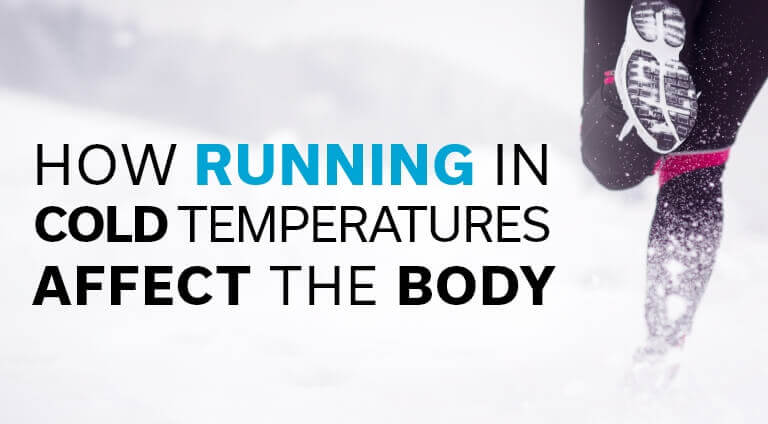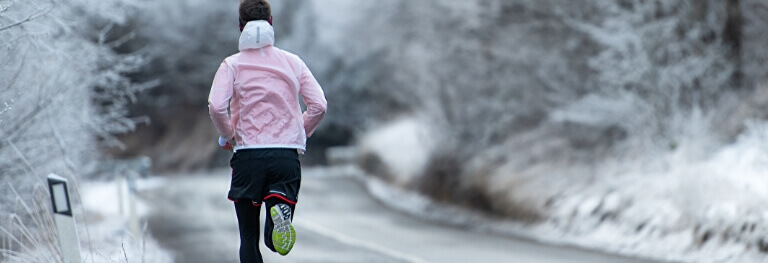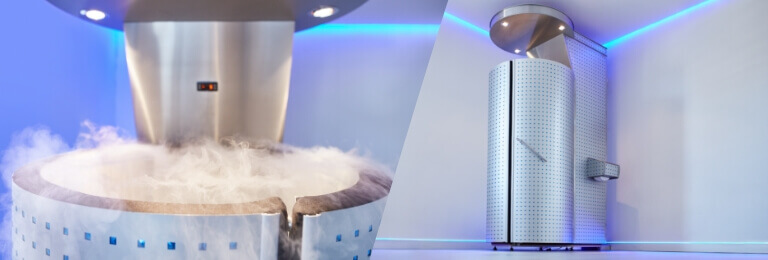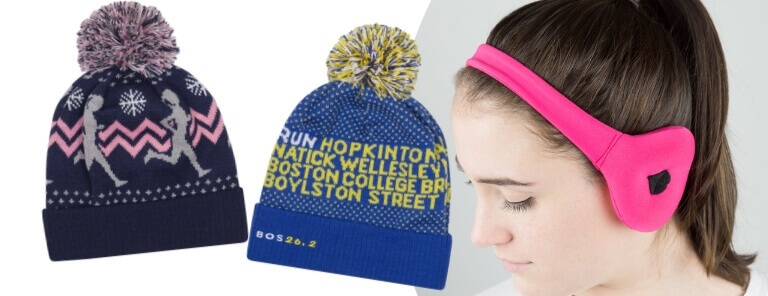ONLY $5.99 Shipping: Flat Rate Economy Shipping*
Free Shipping: Free Economy Shipping is available on orders over $100*
* Free Shipping is only available to valid addresses located in the contiguous U.S.
* Some exceptions apply
Come, run along with us as we share our joy of everything running.

With temperatures dropping we need to rethink our outdoor workouts. If you have ever gone for a run on a chilly morning, you know all too well what the cold feels like when it engulfs your whole body, even your lungs feel immersed in the cold air.
So is it safe to keep running outside?
The short answer, yes.
The issue is how the cold affects our bodies, not just externally, but the impact it has on our internal systems. With that in mind, if we understand how the cold affects our bodily functions and cleared by a medical professional, we can continue exercising outdoors while staying safe.

The healthier you are, the easier it is to adjust to exercising in colder weather. The more physically fit your body is, the better your body is at coping with the additional stress from the frigid temperatures.
Our bodies adapt in various ways. Our cardiovascular system becomes stressed in the cold weather and causes our breathing to change. When exposed to the cold air we tend to take shorter, more shallow breaths. The reduced oxygen restricts blood flow as your arteries narrow to accommodate for the lower temperatures. As a result, the heart has to work harder and your circulation slows down.
When the air cools, we first feel it on our skin, then our fingers, hands, and lastly feet. This is from the circulation slowing inside our bodies. Our blood vessels constrict in the colder temperatures, this is why we shiver when outside in the winter.
To better understand how the cold affects us on the inside, let’s compare it to cryotherapy. I mean, theoretically, they do the same thing, right? Have you ever wondered how exercising in the frigid weather is different than cryotherapy? I explored this idea first hand a few years ago to see for myself.

The cryotherapy chamber is a controlled setting. You are freezing your body for a maximum of 3 minutes. The idea behind using this treatment is to reduce the body temperature quickly constricting the blood vessels (similar to being outside). When in the chamber, you are covered in protective gear from head to toe to avoid frostbite (obviously we cover up outside too).
After your time is up, you step outside the chamber and put your clothes back on so the body heats back up. It is also recommended to run in place for a bit, this will quickly aid in releasing the blood that was constricted in the blood vessels. It is believed that this action increases your oxygen levels. The big difference is in the extreme temperature fluctuations, a shorter period of time will promote faster healing throughout the body. For this reason, cryotherapy is used to treat joint and muscle pain.
Similar to how cryotherapy is designed to improve the body’s functions, exercising in cold weather can have its benefits as well. By exercising in the cold, we are training our body to regulate itself better. This could result in burning more calories, turning our white fat cells into energy-efficient brown fat, regulating body temperature more efficiently, and more often, you can exercise for longer periods of time. Some studies have even shown enhanced endurance from extreme hot or cold weather training.
Feeling inspired for a run? Before heading out, layer up. You want to add layers that insulate your body to keep the heat in. If the temperatures have dropped to freezing or close to, be sure to cover any areas that may be exposed to prevent frostbite. If the wind picks up, you will also want to be adequately covered up from your head to your toes.
If you’re in need of some new running cold gear be sure to check out some of these great options exclusively offered from Gone For a Run.

Post-workout recovery from the cold means warming from the inside, not just the outside. You want to fuel your body with warm foods which will also help aid in digestion. Reach for nourishing soups and comfort foods. We end up feeling less thirsty in the cold because the body conserves energy, so be sure to drink more water to stay hydrated. Also,. Don’t forget to always incorporate some stretching or cool down for your muscles to help them stay flexible.
There are contraindications that can prevent you from exercising outside in colder temperatures. Some of these contraindications include high blood pressure, diabetes, and high cholesterol because of the risk of a heart attack. As always, if you have any health concerns please consult your physician.
Health Disclaimer: This website may provide information related to exercise, fitness, diet, and nutrition and is intended for your personal use and informational purposes only. You should consult with a physician before beginning any exercise, fitness, or nutrition routine, especially if you are pregnant or have pre-existing health conditions. Nothing contained in this Site should be considered as medical advice or diagnosis. Your use of the Website is solely at your own risk.